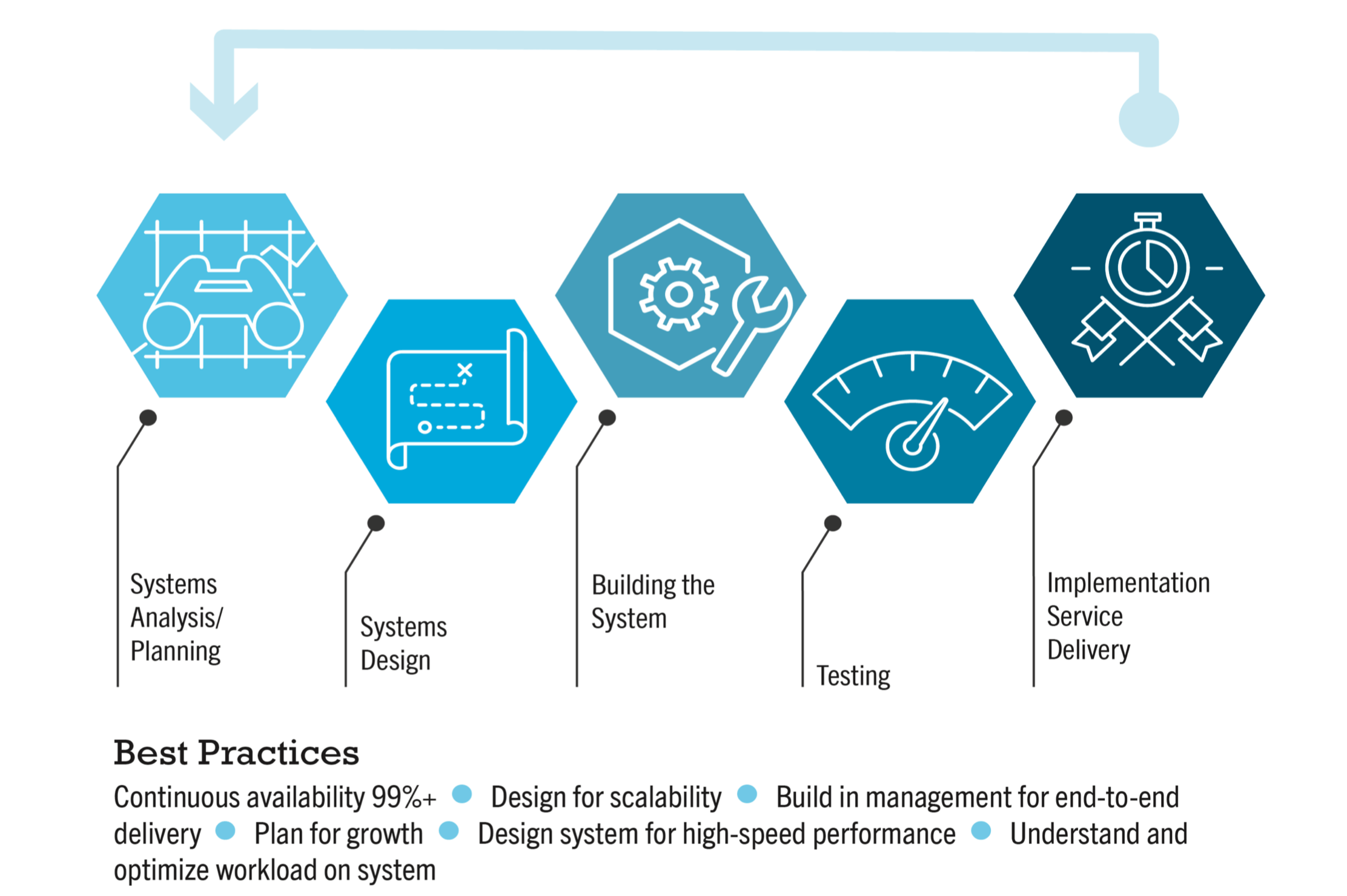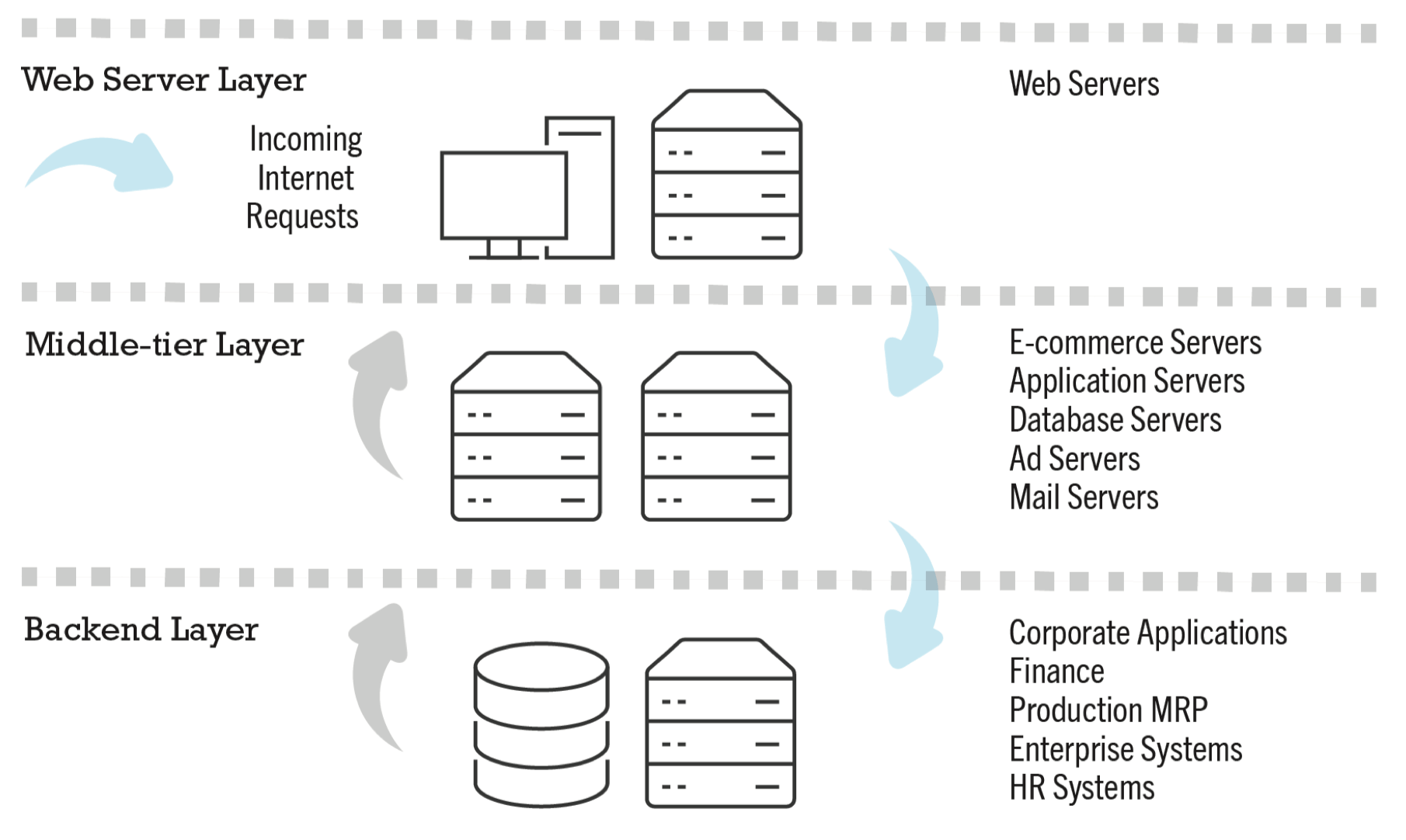ECOM6013 E-Commerce Technologies #
Topic 4 Website Design, Testing and Maintenance #
Planing: The Systems Development Life Cycle
- Systems analysis/planing
- Busisess objectives
- System functionalities
- Information requirements
- Systems design
- Building the system
- Testing
- Implementation

Quality Consideration
- Navigation
- Accessibility
- Scalability
- Reliability
- Maintainability
- Usability
- Compatibility and interoperability
- Security
- Readability
In-House / Outsourcing (Hiring vendors to provide services)
- Build own / outsourcing
- Host own / outsourcing (preferred)
Implementation, Maintenance, and Optimization
Systems break down unpredictably
- Ongoing maintenance
- Benchmarking
Website Optimization
- Page generation
- Page delivery
- Page Content
Simple vs. Multi-tier Website Architecture
System architecture: Arrangement of software, machinery, and tasks in an information system
Two-tier
- Web server
- Database server

Three-tier
- Web application servers
- Backend, legacy databases

Web Server Software
- Appache
- Leading web server software
- works on UNIX, Linux OS
- Reliable
- Stable
- Open source
- Microsoft’s Internet Information Server (IIS)
- Second major web server software
- works on Windows OS
- Integrated
- Easy to use
Basic Functionality Provided by Web Servers
- Processing of HTTP requests
- Security services (Secure Sockets Layer) / Transport Layer Security
- File transfer protocol
- Search engine
- Data capture
- Site management tools
- Verify links
- Identify files
- Monitor customer purchases
- Marketing campign effictiveness
- Track hits and other statistics
- …
Dynamic Page Generation Tools
Contents stored in database and fetched when needed
- CGI
- ASP
- JSP
- ODBC
- JDBC
Advantages
- Lower menu costs
- Permits easy online market segmentation
- Enables cost-free price discrimination
- Enable content management system (CMS)
Application Servers
- Provide specific business functionality required for a website
- Isolate business applictaions from Web servers and databases (middleware)
- Sigle-function applictaions being replaced by integrated software tools that combine all functionality needed for e-commerce site
E-Commerce Merchants Server Software
- Provides basic functions for sales
- Online catalog
- Shopping cart
- Credit card processing
Packages
- Integrated environment that includes most of functionality needed
- Shopping cart
- Merchandises display
- Order management
- Different options for different-sized businesses
- Small, Medium - Yahoo Small Business, open-source solutions
- Mid-range - IBM Wbsphere Commerce Express,…
- Hign-end - IBM WebSphere Professional/Enterprise,…
- Cloud-based SaaS solutions
- Key factors
- Functionality
- Support for different models (e.g. m-commerce)
- Business process modeling tools
- Visual site management and reporting
- Performance and scalability
- Connectivity to existing business systems
- Compliance with standards
- Global and multicultural capability
- Local sales tax and shipping rules
Hardware Platform
- Demand Side (overall customer demand)
- Number of simultaneous users in peak periods
- User profile
- Type of content (dynamic/static)
- Required security
- Number of items in inventory
- Number of page requests
- Speed of legacy application
- Supply Side
- Scalability
- Vertically (increase processing power of individual components)
- Horizontally (multiple computers to share workload)
- Improve processing architecture
- Outsource hosting
- Scalability
Eight Most Important Factors in Successful E-Commerce Site Design
- Functionality
- Informational
- Ease of use
- Redundant navigation
- Ease of purchase
- Multi-browser functionality
- Simple graphics
- Legible text
Personalization Tools
- Persinalization (personal preference, prior history)
- Customization (better fit the needs)
- Cookies (primary method to achieve personalization)
Policy Set
- Privacy policy
- Accessibility (mainly for the disabled)
Mobile Website/Applications
- Type of m-commerce software
- Moble website
- Mobile web app
- Native app
- Hybrid app
Mobile Presence
- Identify business objectives, system functionality, and information requirements
- Driving sales
- Branding
- Building customer community
- Advertising and promotion
- Gathering customer feedback
- …
- Choices
- Mobile first design (most efficient)
- Mobile website (least expensive)
- Responsive web design (RWD) - for different screen resolution
- Automates the inclusion of content based on profiles
- Fluid design
- Optimized performance
- Technically complex (implement, maintain and test)
- Higher cost, larger database
- Adaptive web design (AWD) - for different devices
- Responsive web design (RWD) - for different screen resolution
- Mobile web app (can utilize browser API)
- Native app (most expensive)
- Use device hardware (usually better performance)
- Offline
- Progressive Web App (PWA)
- Platform constraints
- Graphics
- File size
- Features needed to be considered
- Hardware
- Connectivity
- Displays
- Interface
Useful Resources
Build Own Websites